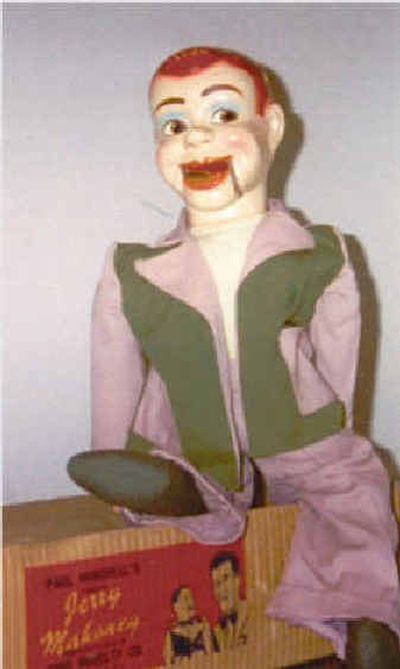Old dummy worth smart sum of money

Dear Collector: Could you tell me if this Paul Winchell’s “Jerry Mahoney,” in its original box, has any value?
Ventriloquist Winchell and his impudent counterpart were among the first performers on television, making an early appearance in 1948. In the ‘50s their popularity earned them a national show, which lasted in one form or another until the 1960s. The box’s label doesn’t include a Zoning Improvement Plan (ZIP) code, which means that your dummy predates 1963, which was when the U.S. Postal Service introduced the system. Let’s assume you have a 1955 Jerry (in really good condition, I might add), then possible value is in $300 range.
Dear Collector: I have a cloth map of China dated 1944-45. Can you tell me how much it’s worth?
Printed on silk and commonly called an “escape” map, these charts were issued to Allied flyers for use in the event they were downed in hostile territory. They’re not as rare as one would think. The current value placed on an example in exceptional condition is only $20 to $40.
Dear Collector: Enclosed is a drawing of the mark on a vase I bought years and years ago at a flea market. Who made it and what’s it worth?
Since you didn’t include a photo or description of the piece in question, all I can tell you is that the maker was Clifton Art Pottery of Newark, N.J., and the probable date of manufacture was between 1905, when they began operation, and 1911, when the factory closed.
Dear Collector: Please suggest a good book for beginners in the glass collecting field. There are so many titles to be had, that I am bewildered about which to buy.
Don’t worry; I am often confused about the profusion of reference books too. “Starting to Collect Antique Glass” by John Sandon (Antique Collectors’ Club, 1999, $25), is a relatively inexpensive, well illustrated book that should help point the way for you.
Dear Collector: I am enclosing copies of sheet music from the 1950s and ‘60s. Is it possible they are worth anything?
Due to space, I picked only one: “Three Coins in the Fountain,” from the 1954 movie of the same name. This hit song (words by Sammy Cahn, music by Jule Styne) introduced Americans to the custom of throwing a coin over one’s shoulder into Rome’s Trevi Fountain. When this tradition began, no one knows. The fountain itself is comparatively new, by Roman standards, though the history of its source dates from the days of the Republic. I hope you’re not too disappointed when I tell you that one price guide lists your sheet music at only $8.
Dear Collector: I have an 1886 Indian Head penny in fair condition. Is it worth more than one cent?
The average buying price for this bronze coin (over 17 million were struck that year) is about $2.
Dear Collector: I have a .44-caliber Remington Arms derringer that my grandfather carried when he was a deputy sheriff. I would appreciate any information you might have on this gun.
Are you sure it’s not a .41 instead? Send me your pistol’s markings, exactly as they appear. Maybe I’ll be able to do more research.
Recommended reading: “Vintage Bar Ware,” Stephen Visakay (Collector Books, values updated 2000, $24.95). “Antique Golf Collectibles,” Chuck Furjanic (Krause, 2004, $29.99). “The Illustrated Encyclopedia of British Willow Ware,” Connie Rogers (Schiffer, 2004, $69.95).